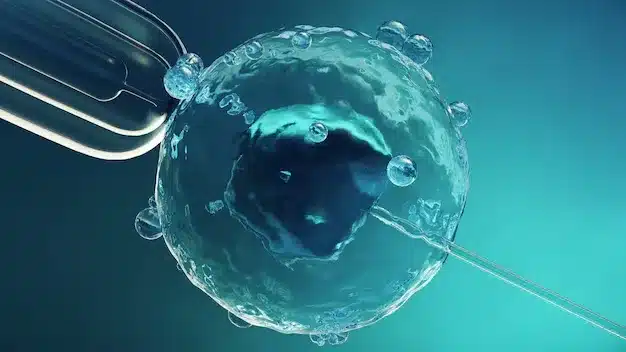Introduction
For Indian intended parents in the USA, one of the first big decisions in egg donation is whether to use fresh donor eggs or frozen donor eggs. Both options can lead to successful pregnancies, but they differ in cost, convenience, success rates, and availability of Indian donors.
This guide provides a side-by-side comparison so families can make an informed choice.
What Are Fresh vs. Frozen Donor Eggs?
• Fresh donor eggs:
Retrieved from a donor after ovarian stimulation, fertilized immediately with sperm, and grown into embryos.
• Frozen donor eggs:
Eggs already retrieved, frozen, and stored in an egg bank. Thawed and fertilized when parents are ready.
Success Rates
Fresh Donor Eggs:
• Higher success rates per cycle: 55–65% live birth per transfer.
• Produce more eggs per retrieval (often 10–20).
• More embryos available for future siblings.
Frozen Donor Eggs:
• Slightly lower success rates: 45–55% live birth per transfer.
• Limited number of eggs (typically 6–8 per batch).
• May result in fewer embryos for siblings.
Cost Comparison
Category | Fresh Donor Eggs | Frozen Donor Eggs
———|——————|——————-
Donor Compensation | $10,000–$15,000 | Already included in package
Agency Fees | $10,000–$15,000 | Minimal, often included
IVF & Lab Fees | $18,000–$25,000 | $12,000–$18,000
Medications | $3,000–$6,000 | Lower, donor already medicated
Total | $40,000–$65,000 | $25,000–$40,000
Timing and Convenience
• Fresh cycle: Takes 2–3 months (donor stimulation, retrieval, embryo creation).
• Frozen cycle: Immediate transfer once sperm is ready.
Donor Availability for Indian Parents
• Fresh donors: Best option for finding Indian or South Asian donors, since agencies like IndianEggDonors.com recruit specifically from this community.
• Frozen donors: Indian donors are rare in U.S. egg banks.
Which Option Is Best for Indian Parents?
• Fresh donor eggs → Best for families who want Indian donors, more embryos, and higher success rates.
• Frozen donor eggs → Best for families prioritizing lower cost and faster timeline, but less choice in Indian donors.
Case Study – Fresh vs. Frozen
Case 1: Fresh Cycle
Rashmi and Dev chose a fresh Indian donor. Their cycle yielded 14 eggs, 8 fertilized embryos, and 4 were genetically tested as normal. They transferred one embryo successfully and froze 3 for future use.
Case 2: Frozen Eggs
Anita and Vikram chose frozen eggs from an egg bank. They purchased a lot of 6 eggs, which produced 2 embryos. One was transferred but did not implant. They later needed to purchase a second batch, increasing their total cost.
Testimonials
“Fresh was more expensive, but we now have embryos for future siblings.” – P.K., Parent, NJ
“Frozen was quicker, but finding an Indian donor was almost impossible.” – R.S., Parent, CA
FAQ
Q: Do frozen eggs have the same success rate as fresh?
A: Success is slightly lower, but many families achieve pregnancy.
Q: Are frozen eggs cheaper?
A: Yes, but they may yield fewer embryos, which can raise total costs over time.
Q: Can I find Indian frozen donor eggs in the USA?
A: Very rare. Fresh donors are the best option for Indian families.
Q: Which option is better for siblings?
A: Fresh donors produce more embryos, making sibling planning easier.
Conclusion & Call to Action
Both fresh and frozen donor eggs can lead to a healthy baby. For Indian intended parents, the choice often depends on whether they prioritize cost and speed (frozen) or success rates and donor availability (fresh).
Explore your donor options today:
• Call 212-661-7177
• Email info@indianeggdonors.com
• Apply at IndianEggDonors.com

Dr. Pooja Patel
Dr. Pooja Patel is a Chief Surrogacy Coordinator at Surrogacy4all. She has 10 years of experience in Anesthesiology and critical care medicine.
She received her medical degree from Seth GS Medical College and K.E.M Hospital in India. She then completed an internship. She finished her Anesthesia residency at Grant Govt Medical College and JJ Group of Hospitals in India.










